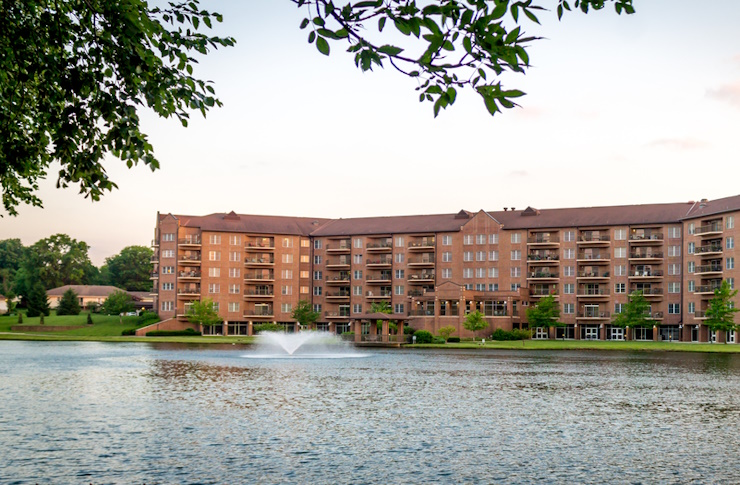Senior Housing Options: Finding Affordable Apartments for Older Adults
As adults enter their golden years, housing needs often change to accommodate new lifestyle preferences and care requirements. Senior apartments provide specialized living environments designed with older adults in mind, offering accessibility features, community amenities, and sometimes supportive services. Understanding the various senior housing options available can help older adults and their families make informed decisions about where to live during retirement years.

Understanding Senior Apartments and 55+ Communities
Senior apartments and 55+ communities are residential properties specifically designed for older adults who can live independently but prefer an age-restricted environment. These communities typically enforce minimum age requirements—usually 55 or 62 years—and offer amenities tailored to seniors’ needs and interests. Unlike traditional apartments, these properties often feature single-level living, wider doorways, grab bars in bathrooms, and emergency call systems. Many include community spaces for social activities, fitness centers designed for older adults, and transportation services to help residents maintain active, engaged lifestyles without the maintenance responsibilities of homeownership.
Exploring Affordable Senior Rental Housing Options
Affordability remains a significant concern for many seniors living on fixed incomes. Several programs exist specifically to make senior housing more accessible financially. The U.S. Department of Housing and Urban Development (HUD) sponsors various affordable housing initiatives, including Section 202 Supportive Housing for the Elderly Program, which provides housing with supportive services for very low-income seniors. Some affordable senior apartments operate under the Low-Income Housing Tax Credit (LIHTC) program, which incentivizes developers to create affordable units. Additionally, many states and municipalities offer their own senior housing assistance programs, which may provide rental subsidies or develop affordable senior communities in local areas.
Finding Independent Living Apartments for Rent
Independent living apartments offer seniors the perfect balance of autonomy and community. These rental units are designed for older adults who can live on their own but want convenience, social opportunities, and freedom from home maintenance. Independent living communities typically include services such as housekeeping, dining options, transportation, and recreational activities. Unlike assisted living facilities, they don’t provide healthcare services or assistance with daily activities, though some communities offer these services à la carte or through partnerships with home health agencies. When searching for independent living apartments in your area, consider factors like location, community atmosphere, available amenities, pet policies, and whether utilities are included in monthly rental fees.
Navigating Senior Housing with Rent Assistance Programs
For seniors with limited financial resources, rent assistance programs can make suitable housing more accessible. The Housing Choice Voucher Program (Section 8) allows qualified seniors to rent apartments where they pay approximately 30% of their income toward rent, with the voucher covering the difference up to a certain amount. Public housing authorities throughout the US manage subsidized senior apartments with income-based rent structures. Additionally, some nonprofit organizations operate senior housing developments with sliding scale rent options. To access these programs, seniors should contact their local housing authority, Area Agency on Aging, or senior services department to learn about application processes and waiting list information.
Comparing 55+ Apartments Available Across the US
The availability and features of 55+ apartments vary significantly across different regions of the United States. In warm-weather states like Florida and Arizona, many 55+ communities include resort-style amenities such as swimming pools, golf courses, and extensive social calendars. Urban areas often feature senior apartment buildings with convenient access to public transportation, healthcare facilities, and cultural attractions. Rural and suburban communities might offer more spacious accommodations at lower price points but potentially fewer amenities. When comparing options, consider regional cost-of-living differences, climate preferences, proximity to family, and access to preferred healthcare providers.
Senior Housing Cost and Provider Comparison
When budgeting for senior housing, understanding the range of costs for different options is essential. Prices vary significantly based on location, amenities, services included, and whether any financial assistance is applied.
| Housing Type | Average Monthly Cost Range | Typical Amenities Included | Potential Financial Assistance |
|---|---|---|---|
| Market-Rate 55+ Apartments | $1,000-$3,500 | Community rooms, maintenance, some utilities | None (unless tenant has Section 8) |
| Affordable Senior Housing | $400-$1,200 | Basic maintenance, some utilities | HUD subsidies, tax credits |
| Independent Living Communities | $1,800-$4,000 | Meals, housekeeping, transportation, activities | Private long-term care insurance |
| USDA Rural Development | $400-$800 | Basic maintenance, some utilities | USDA rental assistance |
| Section 202 Housing | $350-$800 | Service coordination, maintenance | HUD subsidies |
Prices, rates, or cost estimates mentioned in this article are based on the latest available information but may change over time. Independent research is advised before making financial decisions.
Preparing Your Senior Apartment Search
Finding appropriate senior housing requires advance planning and research. Start by assessing current and anticipated needs, including accessibility requirements, proximity to healthcare providers, and desired community features. Create a realistic budget that accounts for rent, utilities, meals, and potential care services. When touring potential apartments, bring a checklist covering safety features, community policies, transportation options, and social activities. Many seniors benefit from visiting multiple properties and speaking with current residents before making a decision. For those applying to affordable housing programs, be prepared for waiting lists that can range from several months to years, making early application essential.
Finding the right senior apartment involves balancing location, amenities, community atmosphere, and affordability. By understanding the various housing options available and utilizing appropriate financial assistance programs, seniors can find comfortable, supportive living environments that meet their needs while respecting their budget constraints. With proper research and planning, the transition to senior housing can be a positive step toward an engaging and fulfilling next chapter of life.




